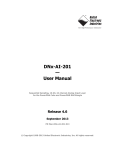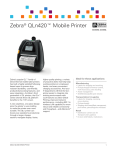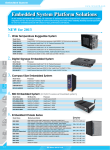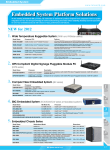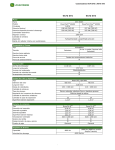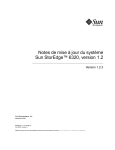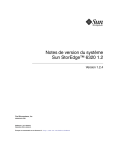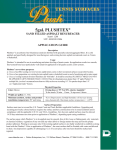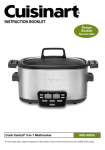Download Henry 16361 Installation Guide
Transcript
The Professional’s Formula For Success™ 615 PatchPro ™ Exterior Concrete Patch Trowel-grade, cementitious topping for filling and repairing areas of indoor and outdoor concrete on all grade levels. t 1PSUMBOEDFNFOUCBTFEDPODSFUFQBUDIBOEýMM t 3FQBJSSFTMPQFBOESFGPSNBMMDPODSFUFTVSGBDFT t &BTZUPBQQMZBOEIBSEFOTRVJDLMZ t *OTUBMMTGSPNwUPwUPNN OFBU BOEVQUPwDN XJUIBHHSFHBUF t 'SFF[FUIBXSFTJTUBOU t 4VJUBCMFGPSGPPUBOESVCCFSUJSFUSBGýD t 4VJUBCMFGPSDPNNFSDJBMBOESFTJEFOUJBMBQQMJDBUJPOT t 6TFGPSJOUFSJPSBOEFYUFSJPSþPPSTBOEXBMMT The W.W. Henry Company 400 Ardex Park Drive Aliquippa, PA 15001 (724) 203-8000 1-800-232-4832 www.wwhenry.com 615 Exterior Concrete Patch Thoroughly broom-sweep and vacuum the area to be resurfaced to remove any fine dust or dirt. Clean debris out of expansion joints, and then tape or mask the joints off to prevent the HENRY 615 from filling them. Use a lawn edger to clean around walks or driveways, as well as around planter boxes and landscaped areas. Substrates must be dry for a successful installation. Substrate and ambient temperatures must be a minimum of 50°F (10°C) for the installation of HENRY products. Cracks and Saw-Cut Joints Description and Usage HENRY® 615 PatchPro™ is a trowel-grade, cementitious topping for filling and repairing areas of indoor and outdoor concrete on all grade levels. Engineered with Portland cement and select high-performance polymers, HENRY 615 readily bonds to concrete surfaces. It is easy to apply, hardens quickly, is freeze-thaw resistant, and produces a surface finish that is suitable for foot and rubber tire traffic. When mixed with water, the result is a creamy, smooth, consistency that can be applied by trowel or screed. Use HENRY 615 to fill spalls, gouges, dormant cracks, “birdbaths” and other low areas in existing concrete surfaces, including sidewalks, patios, plazas, courtyards, walkways, driveways, parking garages, pool decks and vertical concrete substrates. HENRY 615 can also be used to re-form concrete steps and curbs, create ramps over existing concrete, or to resurface vertical concrete substrates. Once applied and allowed to dry properly, HENRY® 625 RestorePro™ Concrete Resurfacer, HENRY® 625F RestorePro™ Concrete Resurfacer Fine or HENRY® 635 SealPro™ High Performance Concrete Sealer can be installed over the patched area, as well as over adjacent concrete to create a uniform appearance. HENRY 615 is recommended for residential and commercial applications. Substrate Preparation The repair area must be saw cut in a basic rectangular shape to at least 1/4” (6 mm) in depth. The cuts should be made at approximately a 90° angle, and should be slightly keyed. The saw cut should not overrun the area to be patched, nor should it be so deep as to cut the reinforcing steel. Chip out the concrete inside the cuts to a minimum depth of 1/4” (6 mm) until the area is squared or boxed. Chipping tools should be used such that they will not damage the surrounding areas of the concrete. All concrete surfaces must be structurally sound, solid and free of any contaminant that might act as a bond breaker, including the removal of form release, existing sealers and paints, patching compounds, weak or loose areas, dust, dirt and oils. Over watered, frozen or otherwise weak concrete surfaces must also be cleaned down to sound, solid concrete. Use mechanical methods such as scarifying or similar to create an exposed aggregate surface with a minimum surface profile of approximately 1/16” (1.6 mm) in accordance with ICRI 03732. Acid etching, solvents, sweeping compounds and sanding are not acceptable means of preparing the substrate. All moving cracks and joints, including expansion joints, isolation joints and construction joints, as well as control joint (saw cuts), must be carried up through the HENRY 615 by installing a flexible sealing compound specifically designed for use in moving joints. Moving cracks can also be repaired using industry standard concrete repair techniques. Nonmoving cracks greater than a hairline in width (3/32” or 2 mm) must be filled with a rigid, two-part epoxy crack and joint filler, which must be sand broadcast to refusal while the epoxy is still fresh. The epoxy must then be allowed to cure in strict accordance with the installation instruction provided by the epoxy manufacturer, and all excess sand must be removed prior to repairing the area with HENRY 615. The filling of dormant cracks as described above is recommended to help prevent the cracks from showing through the repair. However, should movement occur, cracks will reappear. Recommended Tools Mixing buckets, margin trowel, wood or magnesium float, steel trowel, a mixing paddle and a 1/2” heavy-duty drill (12 mm, min. 650 rpm). Mixing and Application Mix each 20 lb (9 kg) bag of HENRY 615 with 2 1/2 quarts (2.4 L) or each 40 lb (18 kg) bag of HENRY 615 with 5 quarts (4.8 L) of water. Pour clean water in the mixing container first, and then add the HENRY 615. For best results, mix with a mechanical mixing paddle and drill. Mechanical mixing will produce a creamier, smoother consistency without the need for additional water. DO NOT OVERWATER! Additional water will weaken the compound and lower its strength. To mix smaller quantities by hand, use 2.75 parts by volume of powder to 1 part of water by volume. Use a margin trowel and mix vigorously for 2 to 3 minutes. Mix thoroughly to obtain a lump-free consistency. The pot life of HENRY 615 is approximately 30 minutes at 70°F (21°C). If the product begins to set in the bucket, remix before using. Do not add more water. In warm weather, use cold water to extend the working time. Cool ambient and surface temperatures will slow the setting time. HENRY 615 is easily applied to any prepared concrete surface using standard concrete practices. Place a scratch coat of the compound onto an area of concrete using a steel trowel, applying enough pressure to ensure good compound-to-concrete contact. Then, using a wood or magnesium float, apply the HENRY 615 over the area to be repaired. If necessary, use a straightedge to screed the surface to match the existing elevation. After the compound takes an initial set (approx. 30 to 40 min. at 70°F/21°C), use a steel trowel to finish the HENRY 615. Thickness of Installation Notes HENRY 615 can be installed from 1/4” to 1/2” (6 to 12 mm) neat, and up to 2” (5 cm) with the addition of proper aggregate. For areas thicker than 1/2” (12 mm), mix HENRY 615 with washed and well-graded 1/8”-1/4” (3 to 6 mm) pea gravel. Mix the HENRY 615 with water first, and then add 1 part by volume of aggregate, mixing until the aggregate is completely coated. Do not use sand. If aggregate is wet, reduce the amount of water to avoid over watering. Please note that thicker areas will take longer to set and will reduce the overall coverage. The pot life of HENRY 615 is approximately 30 minutes at 70°F (21°C). Pot life will vary with ambient temperatures. Curing Although HENRY 615 requires no special curing procedures, avoid applying this product if rain is expected within 6 to 8 hours, or if freezing temperatures could occur within 24 hours of application. As with any cementitious material, the above conditions can alter the appearance and performance of the patching compound. HENRY 615 can receive light foot traffic after approximately 2 hours. Color HENRY 615 is formulated from Portland cement and is a light gray color when dry. As concrete color and jobsite conditions vary widely, it is not intended that this product will match the color of the concrete being resurfaced or an adjacent concrete pad. Jobsite conditions such as direct sunlight and wind, as well as the surface of the HENRY 615 being exposed to moisture before it completely sets, can lead to minor color variations in the appearance of the patching compound. If a more uniform aesthetic appearance is desired, HENRY recommends that the repaired area and adjacent concrete either be skim coated with HENRY 625 or HENRY 625F after 4 hours, or sealed with HENRY 635 in Gray after 24 hours. Please refer to the HENRY Technical Brochures for instructions. Sealing As is the case with any concrete surface, HENRY 615 should be sealed with a water-borne, breathable concrete sealer to prevent dusting and to help resist damage from standing water, salt or oil, as well as staining and marking. HENRY recommends the use of HENRY 635 to seal HENRY 615, as well as other absorbent concrete and masonry surfaces. Sealing can proceed once the HENRY 615 has cured for a minimum of 24 hours (70°F/21°C). If HENRY 625 or HENRY 625F is installed over the HENRY 615, the installation still requires a minimum of 24 hours before sealing. Avoid full traffic and vehicular traffic until the sealer has dried thoroughly. For further information, please refer to the HENRY Technical Brochures. HENRY 615 is intended for resurfacing interior and exterior concrete subject to foot and rubber-wheeled traffic. Do not use in fountains, inside swimming pools or in any areas that will be permanently submerged in water. HENRY 615 is recommended for residential and commercial use only. HENRY 615 is not intended for industrial uses such as heavy manufacturing or areas with heavy truck traffic. Always install an adequate number of properly located test areas, including the sealer, to determine the suitability and aesthetic value of the products for the intended use. As sealers vary, always contact and rely upon the sealer manufacturer for specific directives such as maximum allowable moisture content, sealer selection and intended end use of the product. Never mix with cement or additives other than HENRY approved products. Observe the basic rules of concrete work. Do not install below 50°F (10°C) surface and air temperatures. Install quickly if substrate is warm, and follow warm weather instructions available from the HENRY Technical Service Department. Precautions Carefully read and follow all precautions and warnings on the product label. For complete safety information, please refer to the Material Safety Data Sheet (MSDS) available at www.wwhenry.com. Technical Data According to HENRY Quality Standards All data based on a mixing ratio of 2.75 parts powder to 1 part water by volume at 70°F (21°C). Physical properties are typical values and not specifications. Mixing Ratio: 2 1/2 quarts (2.4 L) of water per 20 lb. (9 kg) bag 5 quarts (4.8 L) of water per 40 lb. (18 kg) bag For smaller batches, use 2.75 parts powder to 1 part water Coverage: 11.25 sq. ft. per 20 lb. (9 kg) bag at 1/4” (1.05 m2 at 6 mm) 22.50 sq. ft. per 40 lb. (18 kg) bag at 1/4” (2.10 m2 at 6 mm) Application methods and the texture of the concrete being coated will affect this rate. Compressive Strength (ASTM C109/mod – Air cure only): 3600 psi (253 kg/cm2) at 28 days Working Time: 30 minutes Pot Life: 30 minutes Walkable: Light foot traffic in 2 hours Coat or Seal: Apply HENRY 625 or HENRY 625F after 4 hours Apply HENRY 635 after 24 hours VOC: 0 Packaging: 20 lb. (9 kg) net weight bag 40 lb. (18 kg) net weight bag Storage: Store in a cool, dry area. Do not leave bags exposed to sun. Shelf Life: 1 year, if unopened Warranty: HENRY Standard Limited Warranty applies. HR-042 (10/02/2012) The W.W. Henry Company 400 Ardex Park Drive Aliquippa, PA 15001 (724) 203-8000 1-800-232-4832 www.wwhenry.com





